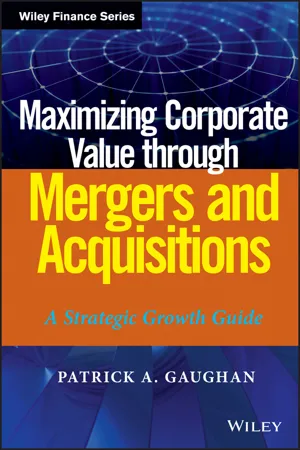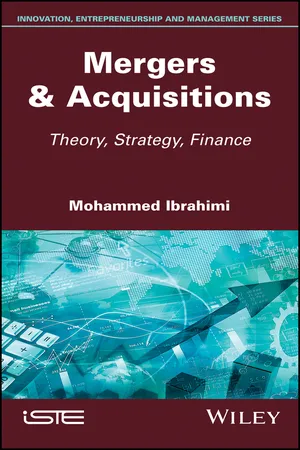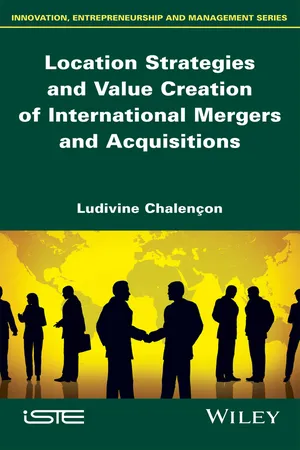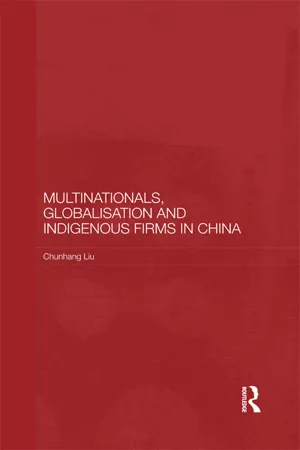Business
Mergers
Mergers refer to the combining of two or more companies to form a single entity. This strategic move is often aimed at achieving synergies, expanding market share, or gaining competitive advantages. Mergers can take various forms, such as horizontal (between competitors in the same industry), vertical (between companies in different stages of the supply chain), or conglomerate (between unrelated businesses).
Written by Perlego with AI-assistance
Related key terms
Related key terms
1 of 4
Related key terms
1 of 3
9 Key excerpts on "Mergers"
- eBook - ePub
Managing Strategy
Your guide to getting it right
- Chartered Management Institute(Author)
- 2014(Publication Date)
- Profile Books(Publisher)
An acquisition is where one business acquires another by gaining ownership of its net assets or liabilities. This may be welcomed by the acquired company or it may be heavily contested, resulting in acrimonious and public disputes.A merger is often an agreed union of one or more organisations. A merger can be the result of a friendly takeover that results in the combining of companies on an equal footing. After a merger, the legal existence of the acquired organisation is terminated. The degree of friendliness in such unions can, however, vary considerably.In reality, there is no standard template of a merger, as each union is different, depending on what is expected from the merger, and on the negotiations, strategy, stock and assets, human resources and shareholders of the players.However, three broad types of merger are recognised:- horizontal merger – involves firms from the same industry, operating at the same points in the supply chain
- vertical merger – involves firms from different points in the supply chain in the same industry
- conglomerate merger – a union of firms with few or no similarities in production or marketing that come together to create a larger economic base and greater profit potential.
Mergers and acquisitions (M&A) are an integral part of the business landscape and a valuable tool for business growth. They form part of the strategy of many businesses across a number of sectors – in the online sector, for example, being acquired soon after creation is almost a benchmark of success.M&A may be undertaken for various reasons:- strategic – with the aim of increasing market share, for example
- financial – where a cash-rich business buys an undervalued business
- organisational or personal – where the ambitions of a board drive the process.
It should be noted that the M&A process can take a long time to complete, may need the input of many outside specialists and advisers, and may require the lengthy commitment of a high-level internal team. Even with this input, many Mergers or acquisitions are not completed or fail to deliver the expected returns. - eBook - ePub
Finance in Asia
Institutions, Regulation and Policy
- Qiao Liu, Paul Lejot, Douglas W. Arner(Authors)
- 2013(Publication Date)
- Routledge(Publisher)
1 They may be conducted voluntarily or because of commercial pressures, and may be contested by one or more rivals. The principals may be mutually amicable or hostile, and may change positions if their shareholders or financiers allow.Mergers are commonly consensual and voluntary combinations of businesses. They involve an exchange of shares or cash payment to the smaller company, followed by a consolidation of share capital or the creation of a new holding company. Acquisitions refer to a larger company’s purchase of one that is smaller, or a reverse takeover where a smaller company acquires control of a larger, longer-established or well-branded company, intending to retain its name and share listing.M&A refers broadly to any capital market transaction resulting in a change in ownership or control. Mergers, acquisitions, formal joint ventures, private asset sales or proxy fights can all be classed as M&A if such changes take place. Proxy contests are part of US corporate practice and securities regulation as formal disputes over corporate strategy or control. A hostile bidder or minority interest will seek support (the proxy votes) of shareholders to elect sympathetic directors who will approve the bid or change of strategy upon joining the board. Statements made to garner proxies are regulated by the SEC in the same way as IPO prospectuses.We can also classify transactions by the type of intended combination they represent:• Horizontal combinations, where merging companies operate in the same commercial sector and produce broadly similar products. Economies of scale and scope are the usual motives, with the combined entity intending to improve operating income, reduce costs or increase its products, services or scope of distribution so as to improve competitiveness and market share. Horizontal Mergers may also have defensive motives – that is, to capture a target to prevent it being absorbed by a competitor. - eBook - ePub
- Rajesh Kumar(Author)
- 2017(Publication Date)
- Academic Press(Publisher)
An acquisition also known as a takeover is the buying of one company (the target) by another. An acquisition can be friendly or hostile. In a friendly takeover the companies proceed through negotiations. In the latter case, the takeover target is unwilling to be bought or the target’s board has no prior knowledge of the offer. Horizontal Mergers take place when two merging companies produce similar product in the same industry. In other words, a horizontal merger occurs when two competitors combine. For example, in 1994 two defense firms Northrop and Grumman combined in a $12.7 billion merger. A vertical merger refers to a firm acquiring a supplier or distributor of one or more of its goods or services These are combinations of companies that have a buyer seller relationship. Vertical Mergers occur when two firms, each working at different stages in the production of the same good combine. Vertical Mergers take place between firms in different stages of production operation.Five wealth increasing motivation for M&As5 can be explained in terms of a) increase in efficiency by creating economies of scale, or by disciplining inefficient managers b) Exploitation of asymmetric information between acquiring firm managers and acquiring or target firm shareholders c) Solution to agency problems associated with the firm’s free cash flow d) Increase of Market power e) Utilization of tax credits. The operating and financial economies of scale and scope are certainly major determinants of merger activity. Mergers occur because when incompetent managers reduce the value of the firm’s shares to the point where it is profitable for outsiders to gain control. Mergers then can be viewed as an effective discipline over management.The operating synergy theory postulates economies of scale or of scope and that Mergers help achieve levels of activities at which they are obtained. It includes the concept of complementarity of capabilities. For example, one firm might be strong in R&D but weak in marketing, while another has a strong marketing department without the R&D capability. Merging these two firms may result in operating synergy. - eBook - ePub
Maximizing Corporate Value through Mergers and Acquisitions
A Strategic Growth Guide
- Patrick A. Gaughan(Author)
- 2013(Publication Date)
- Wiley(Publisher)
CHAPTER 5 Horizontal Integration and M&A Horizontal integration refers to combinations between competitors as opposed to those who have a buyer-seller relationship. Essentially, it means buying or merging with your rivals. There are several reasons why companies might pursue horizontal deals including gaining competitive advantages and market power over their rivals as well as seeking consolidation economies of scale. In this chapter, we explore the evidence that exists regarding the extent to which these types of Mergers and acquisitions (M&A) generate benefits. As with other types of M&A, we see that sometimes they yield great benefits and others leave the participants no better off and sometimes even worse. This latter possibility is somewhat surprising in light of the fact that horizontal deals do not have some of the inherent problems as other types of M&A, such as diversifying deals. With horizontal M&A, we are merging two businesses in the same industry. It is reasonable to expect that the likelihood of success should be greater than other types of M&A. This is true, but horizontal deals can still present their own challenges. ADVANTAGES OF HOLDING THE ONE AND TWO POSITION IN THE INDUSTRY A horizontal merger between two of the larger companies in an industry may allow the combined entity to attain the number one or two position in the industry. This position by itself may convey competitive benefits over rivals. We have discussed this concept in Chapter 4, where we considered highly diverse companies, such as conglomerates, pursuing a strategy of holding business units in diverse industries that held a number one or two position in their respective industries - eBook - ePub
Mergers & Acquisitions
Theory, Strategy, Finance
- Mohammed Ibrahimi(Author)
- 2018(Publication Date)
- Wiley-ISTE(Publisher)
A full or partial buyout of shares in a company is subject to strictly regulated and tightly controlled procedures. The operation is characterized by the notion of the acquisition of pre-combined and organized assets, ready to be put to work in producing goods or services. However, over time and in reaction to an evolving legal framework, external growth has taken a variety of shapes and forms. The concept of Mergers/acquisitions is often associated with several other notions (buyouts, restructuring, concentration, stake acquisition, public takeovers, etc.) which may lead to confusion. We therefore need to explain these concepts, using their widely accepted definitions.2.1.1. Types of company Mergers and acquisitions2.1.1.1. Merger typesMerger operations, in the strictest sense, must involve two companies pooling their resources within a single moral entity. Stakeholders in the new entity are rewarded in shares and/or cash. These operations are irreversible and may take a variety of forms. They sometimes lead to the dissolution of one or more of the companies in question and power within the new entity may change hands.2.1.1.1.1. Absorption Mergers
In an absorption merger, only one company retains its legal and economic identity. The absorbed company disappears and, as such, is dissolved. During the merger, both assets and liabilities are transferred from the absorbed entity to the absorbing entity.Figure 2.1.Absorption merger2.1.1.1.2. Spin-off and split-off
Fragmentation Mergers include the partial or total division of a company’s resources into one or more subsidiaries. Total fragmentation involves the disappearance of the fragmented company and the constitution of one or more new entities which inherit the assets of one or more dissolved companies. In cases of partial fragmentation, the original company continues to exist alongside the new entity.Figure 2.2.Spin-off and split-off2.1.1.1.3. Partial asset contribution Mergers
This operation consists of regrouping or redistributing assets. Either each entity may provide part of the assets required to create a new whole, or one of the two entities may only acquire some of the assets of the other entity. Partial asset contributions may occur between companies within a same group or between economically independent companies.Figure 2.3.Partial asset contribution merger2.1.1.1.4. Mergers by disappearance of the merged companies
These operations are often simply referred to as Mergers. In this case, two companies combine all their resources to create a single, new entity. Both original companies disappear to create a third, new business, and their shareholders become shareholders in this new creation. - eBook - ePub
- John Coffey, Valerie Garrow, Linda Holbeche(Authors)
- 2012(Publication Date)
- Routledge(Publisher)
They divide the strategic purpose of an acquisition or merger into five different categories: A horizontal/related merger: when two organizations have the same or closely related products in the same geographical market, with approximately the same customers and suppliers A vertical merger : when the organizations involved had, or could have had, a buyer–seller relationship prior to the combination and operate in the same industry A product extension : where the variety of products increases but the products are not competing directly with one another Market extension: where the firm is producing the same products or services but in different market areas Conglomerate/unrelated acquisition: where the firms involved are unconnected. Other M&A classifications include: Concentric marketing: the target has the same customer types as the buying/dominant company but uses different technology. Concentric technology: the target company uses the same technology as the buying/dominant company but has different customer types. What is interesting about these different types of strategic purpose is that they tend to drive different attitudes and behaviours in employees within the acquired company. In addition to having different types of purpose, Mergers can be defined by the nature and level of integration they involve. Napier 2 distinguishes three types of Mergers: extension; collaborative; and redesign Mergers. In extension Mergers, the acquired organization is left untouched or only slightly changed with regard to its management or operation. Typically it is important to retain managers in this type of merger. Collaborative Mergers occur when two organizations blend operations, assets, technology or cultures. This can take place in a synergistic way, when both organizations make compromises, or when exchanging or transferring knowledge or something else between the organizations - eBook - ePub
Management and Information Technology
Challenges for the Modern Organization
- Peter Ekman, Peter Dahlin(Authors)
- 2011(Publication Date)
- Routledge(Publisher)
Harrison, 2003; Penrose, 1959; Wilson, 1980). Internal growth is accomplished by using the company’s own resources to expand its business, which is generally slower but less risky, whereas external growth builds on cooperation with or acquisition of other companies (Harrison, 2003). One way for companies to grow is thus through Mergers and acquisitions, in which growth can be accomplished through the internalization of another company’s resources to expand the capabilities, gain control over critical resources, and overcome growth barriers (Andersson, Johanson, & Vahlne, 1997; Wilson, 1980; Yip, 1982). The possibility of combining resources through Mergers and acquisitions enables expansion at a more rapid rate and in larger steps (Penrose, 1959, p. 195). This can be a key factor in fast-changing industries, such as the IT sector, where organic growth simply is too slow to keep up with the competition. What is gained in momentum, however, is lost in control. The integration of two businesses entails a wide variety of difficulties, and many consider acquisitions to have a very low success rate (e.g. Datta, 1991; Perry & Herd, 2004). Different types of Mergers and acquisitions can be distinguished, and a commonly used categorization is a typology accredited to the FTC (Federal Trade Commission), based on similarities in the product, technology, or market of the consolidating companies and delineated between vertical, horizontal, and conglomerate M & As (Federal Trade Commission, 1968). A horizontal M & A takes place between two similar companies in the same industry, often described as ‘competitors’, primarily to reduce competition or to coordinate product development (Larsson, 1990; Vaara, 1992). A vertical merger involves two companies within the same “value chain”, in the sense that the output of one is the input of the other. This basically means that a customer buys its supplier, or vice versa, and this applies to production as well as distribution lines - Ludivine Chalençon(Author)
- 2017(Publication Date)
- Wiley-ISTE(Publisher)
Ample literature has focused on this second motive. According to Haspeslagh and Jemison [HAS 91], Mergers and acquisitions originate from various motivations of one or several agents, which results in various synergies and may even generate incompatibilities. In this line of thought, Hoberg and Phillips [HOB 10] characterize synergies as “the keys to guide Mergers”. In their analysis of voluntary press releases in the context of public offers to purchase or sell, Nègre and Martinez [NÈG 13] show that acquirers and targets mainly emphasize expected synergies in order to persuade investors of the relevance of the operation. The synergy concept originates from works of Ansoff [ANS 89], in which the author considers how the value of two combined companies can be higher than the sum of their individual values: “2 + 2 = 5”. Three forms of synergy can usually be distinguished [DEV 09]: – operational synergies refer to the benefits resulting from the merging of activities and more precisely from growth synergies (turnover increase) and cost synergies (charge reduction); – financial synergies result, for example, from the increase in borrowing power, fiscal optimization or access to simpler capital markets; – managerial synergies result from savings in terms of knowledge transfer, as knowledge is crucial in business sectors in which innovation is key. It is also crucial to conquer new markets. Devos et al. [DEV 09] less specifically see synergies as the benefits resulting from economies of scale and range, from the reduction of operational cost and/or of capital investments. According to them, such synergies are directly translated into the improvement of cash flows. They stress the fact that synergies result from cost reduction rather than from increases in exploitation products- Chunhang Liu(Author)
- 2012(Publication Date)
- Routledge(Publisher)
3 Introducing the contextRecent changes in global business structureA study of integration of firms from developing countries into the global economy entails first an investigation into the structure of that global economy itself. Since the beginning of the 1990s, the global business environment has undergone profound changes, driven by liberalisation of trade and capital flows, rapid advances in information technology, and the trend of privatisation and deregulation in many parts of the world. One of the direct consequences of these changes is an explosion in merger and acquisition activities between firms from high-income countries, leading to unprecedented degrees of concentration in many industries at a global level. Nolan (2001) has named this phenomenon ‘the global business revolution’. This chapter investigates these recent changes in global business structure and adds a historical perspective by comparing the global business revolution with the emergence of large American business at the end of the nineteenth century.The merger wave at the end of the twentieth centuryBetween 1980 and 2000, Mergers and acquisitions (M&As) had a combined value of more than $12 trillion. During this period, the trend of global business restructuring seemed to be accelerating: between 1980 and 1999, M&As completed worldwide grew at an average annual rate of 42 per cent, to reach $2.3 trillion in 1999, or 8 per cent of the world GDP (UNCTAD, 2000). The top 50 US Mergers during this 20-year period alone accounted for nearly $2 trillion. The largest US M&A transactions tend to focus on service industries, with M&As in financial services, media and entertainment, and telecommunication services accounting for 25 per cent, 22 per cent and 21 per cent of transaction value. By 1990, one-third of the giants in America’s Fortune 500 in 1980 had lost their independence; five years later, another 40 per cent had disappeared (The Economist
Index pages curate the most relevant extracts from our library of academic textbooks. They’ve been created using an in-house natural language model (NLM), each adding context and meaning to key research topics.
Explore more topic indexes
Explore more topic indexes
1 of 6
Explore more topic indexes
1 of 4








